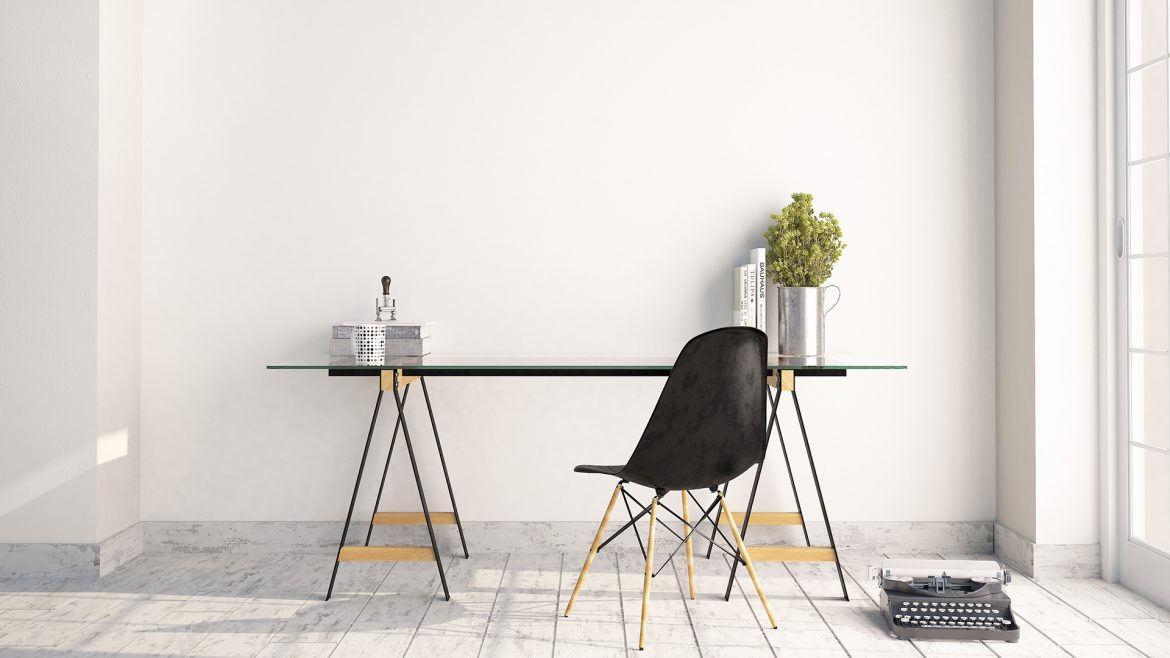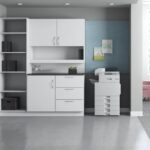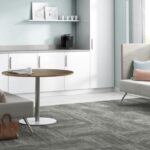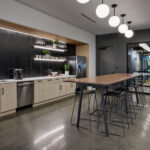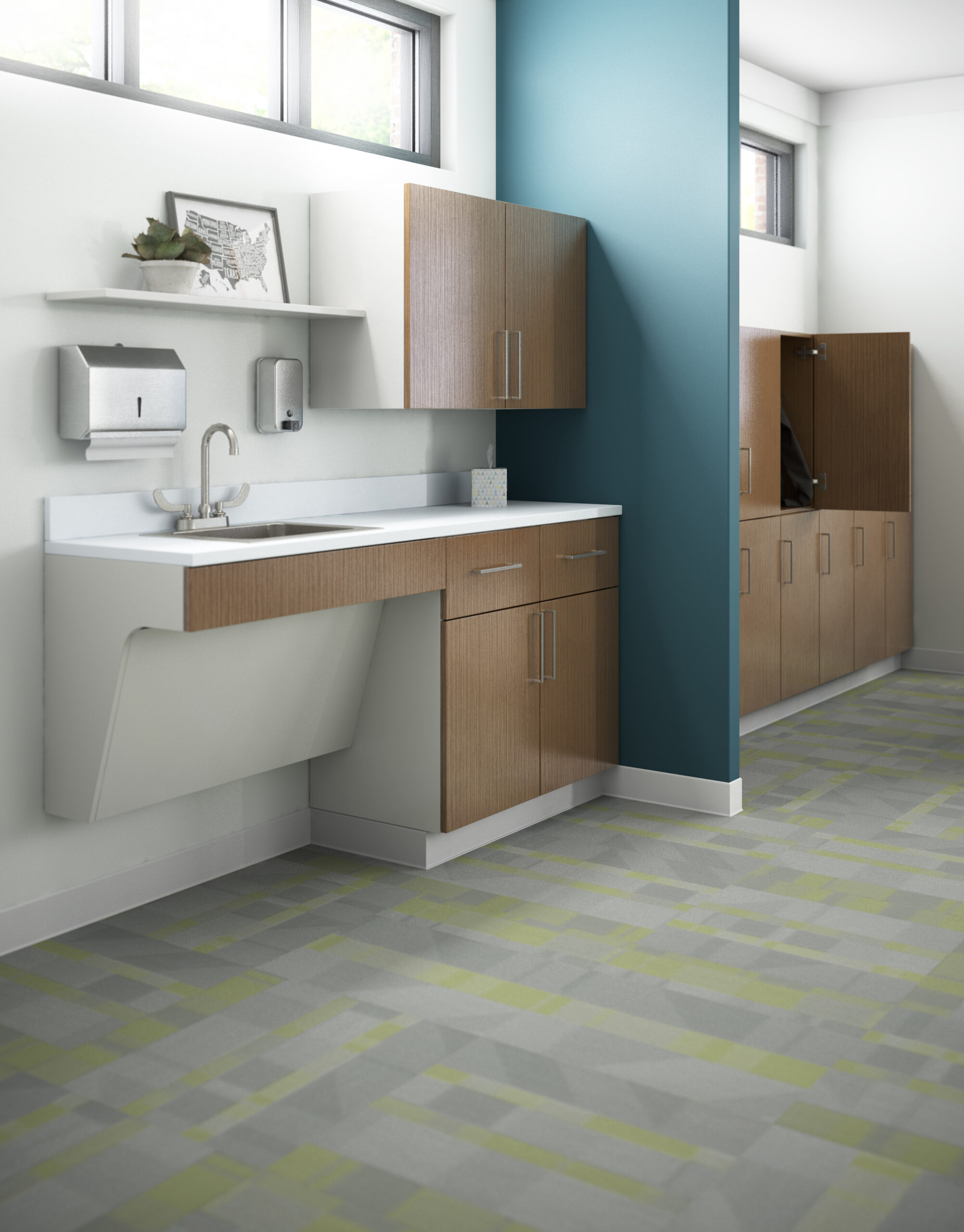Selecting the Right Kind of Office Furniture

Choosing the right office furniture is crucial for creating a productive, comfortable, and aesthetically pleasing workspace. Here are some key considerations to guide you in selecting the appropriate kind of office furniture:
1. Workstations and Desks
Types:
- Standard Desks: Suitable for individual workspaces with ample surface area for computers, documents, and personal items.
- Sit-Stand Desks: Adjustable desks that allow users to alternate between sitting and standing positions, promoting better health and productivity.
- Corner Desks: Ideal for making efficient use of corner spaces and providing a larger work surface.
- Hot Desks: Flexible desks used for hot desking, allowing multiple users to share the same desk at different times.
Considerations:
- Size and Shape: Ensure the desk fits comfortably within the space and meets the user’s work needs.
- Storage: Desks with built-in drawers or storage compartments can help keep the workspace organized.
- Material: Choose durable materials such as wood, metal, or high-quality laminates.
2. Seating
Types:
- Ergonomic Chairs: Designed to support proper posture and reduce strain, with adjustable features like lumbar support, armrests, and seat height.
- Executive Chairs: High-end chairs with additional padding and features, suitable for managers and executives.
- Task Chairs: Versatile and comfortable chairs for general office use, often with swivel and mobility features.
- Guest Chairs: Comfortable seating for visitors, placed in reception areas or meeting rooms.
Considerations:
- Comfort: Ensure chairs provide adequate support and comfort for long periods of sitting.
- Adjustability: Look for adjustable features to accommodate different users.
- Material: Choose breathable materials like mesh or high-quality fabric for seating comfort.
3. Storage Solutions
Types:
- Filing Cabinets: Essential for organizing and storing documents. Available in vertical or lateral configurations.
- Shelving Units: Open or closed shelves for storing books, binders, and office supplies.
- Storage Cabinets: Enclosed cabinets for additional storage needs, often used for larger items or supplies.
Considerations:
- Capacity: Ensure the storage solution can accommodate current and future storage needs.
- Accessibility: Choose storage units that are easily accessible and help keep the workspace tidy.
- Security: Consider lockable cabinets for sensitive documents and items.
4. Meeting and Collaboration Furniture
Types:
- Conference Tables: Large tables designed for meetings, available in various shapes and sizes.
- Collaboration Tables: Flexible tables for team collaboration, often with integrated technology like power outlets and screens.
- Breakout Furniture: Casual seating options like sofas, lounge chairs, and coffee tables for informal meetings and breaks.
Considerations:
- Size: Ensure the table fits the meeting room and accommodates the number of attendees.
- Technology Integration: Look for tables with built-in tech features to facilitate meetings and presentations.
- Comfort: Choose comfortable seating options for longer meetings and collaborative sessions.
5. Reception and Lounge Furniture
Types:
- Reception Desks: The focal point of the reception area, designed to welcome visitors and provide a workspace for reception staff.
- Waiting Area Seating: Comfortable chairs or sofas for visitors to sit while waiting.
- Coffee Tables: Small tables for magazines, brochures, and refreshments in the waiting area.
Considerations:
- Aesthetic Appeal: Choose furniture that reflects the company’s brand and creates a welcoming atmosphere.
- Durability: Ensure the furniture can withstand frequent use.
- Comfort: Provide comfortable seating to make a positive impression on visitors.
6. Modular Furniture
Types:
- Modular Workstations: Flexible workstations that can be easily reconfigured to adapt to changing needs.
- Modular Storage: Storage units that can be stacked or arranged in various configurations.
- Modular Seating: Seating options that can be rearranged to suit different spaces and purposes.
Considerations:
- Flexibility: Choose furniture that can be easily adjusted or expanded.
- Functionality: Ensure the modular pieces meet the specific needs of the office.
- Aesthetic Consistency: Maintain a consistent look and feel with other office furniture.
Conclusion
Selecting the right office furniture involves considering functionality, comfort, aesthetics, and flexibility. By understanding the different types of office furniture and their specific benefits, you can create a workspace that enhances productivity, well-being, and the overall office environment. Invest in quality furniture that meets the needs of your team and reflects your company’s style and values.
Get in touch with us www.bywayindia.com
Email: info@bywayindia.com
Phone: +91-9999351946, +91-9999729954
Address: E-50, Sector-63, Noida UP-201301
Follow us on LinkedIn :- https://lnkd.in/g-6NAgre
Follow us on Facebook :- https://lnkd.in/g6fUUXvw
Follow Us on Twitter:- https://x.com/byway_india


